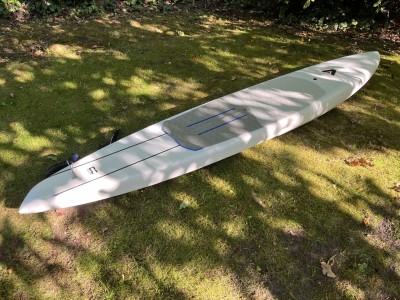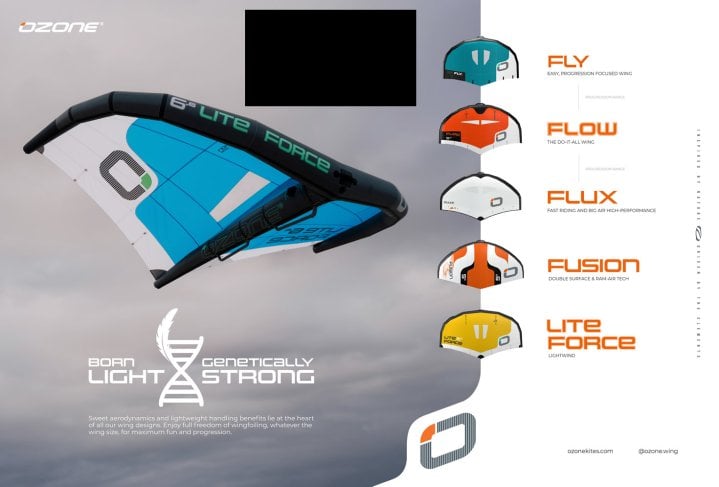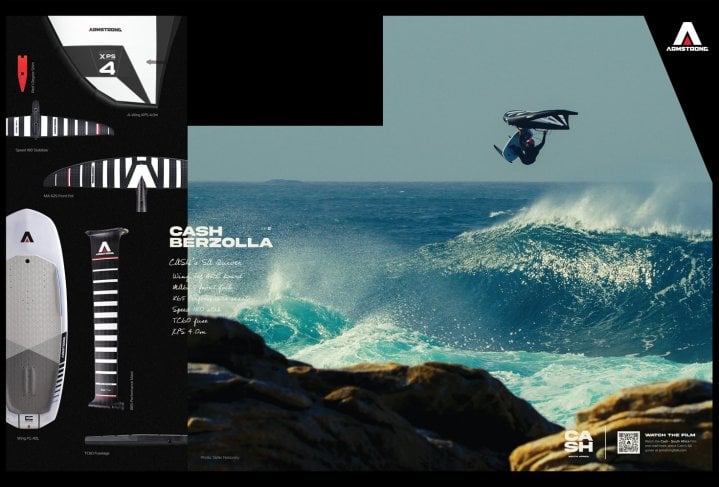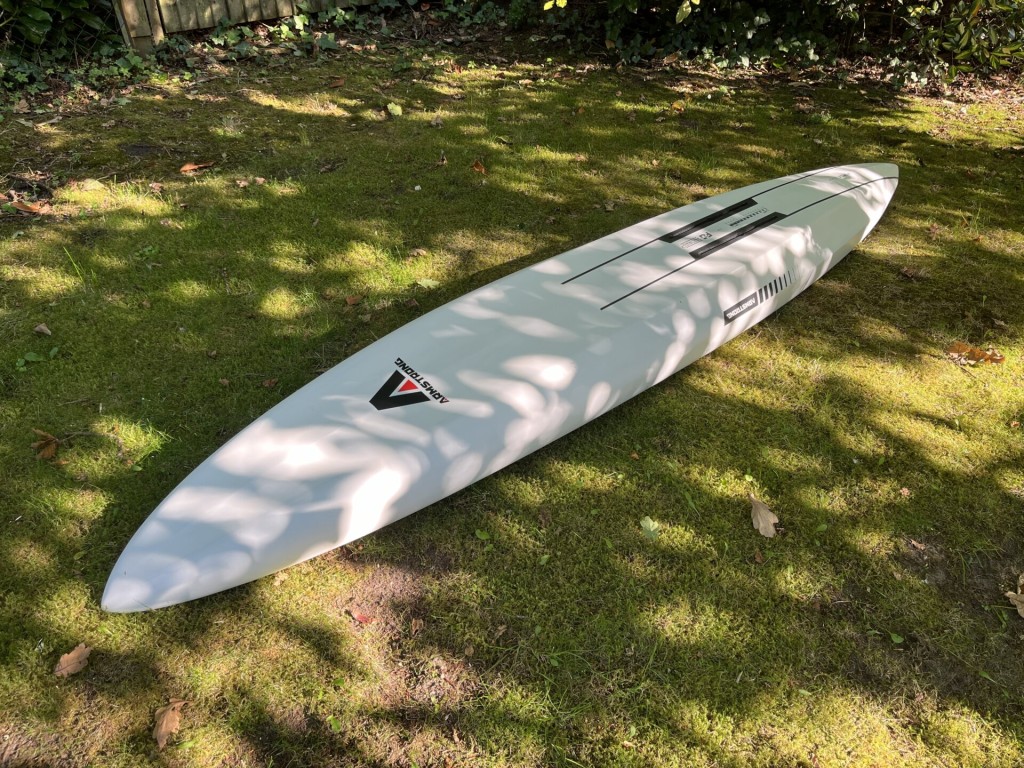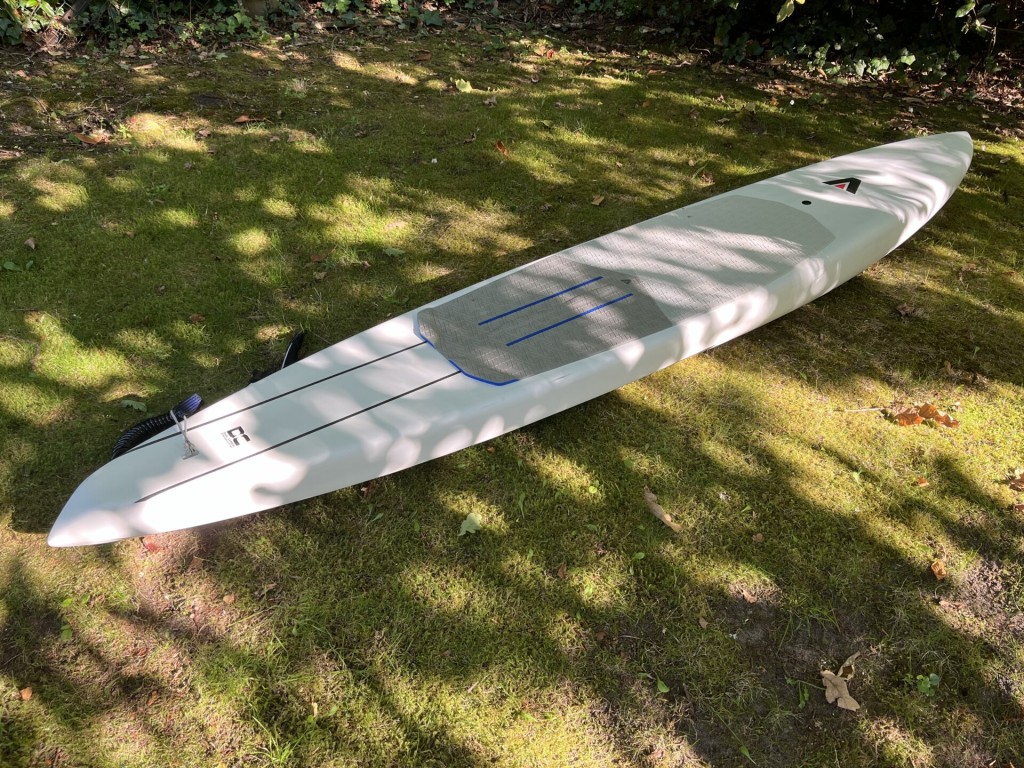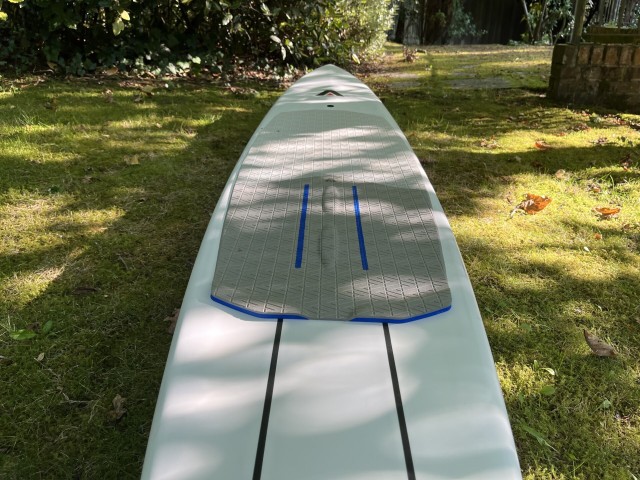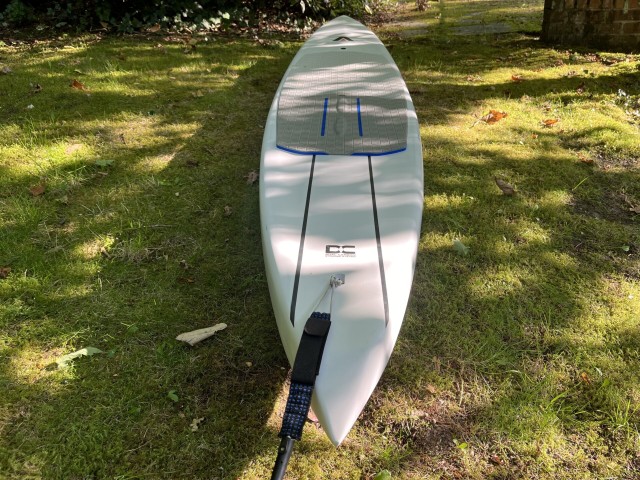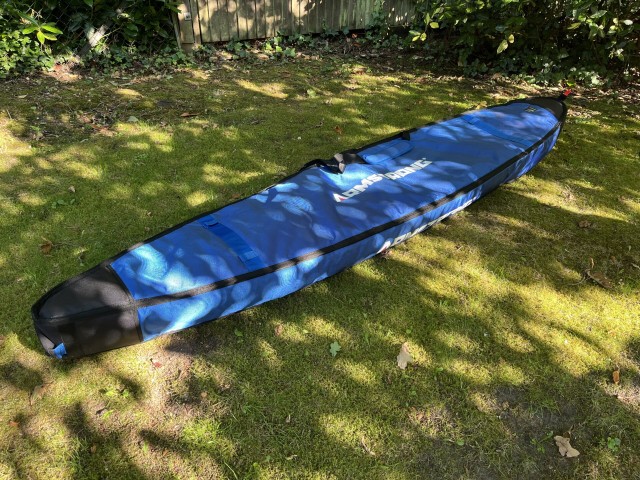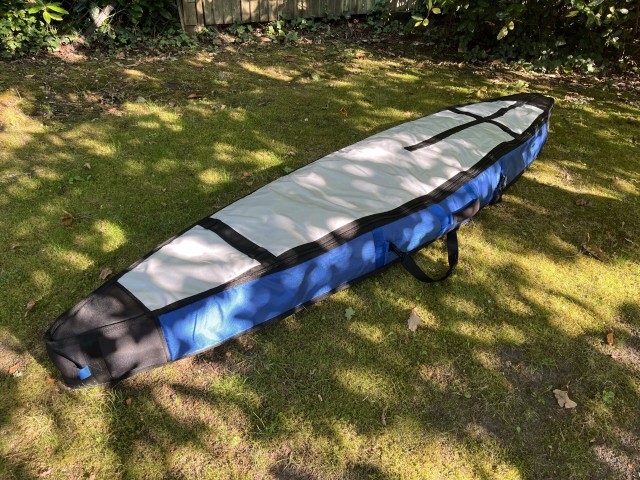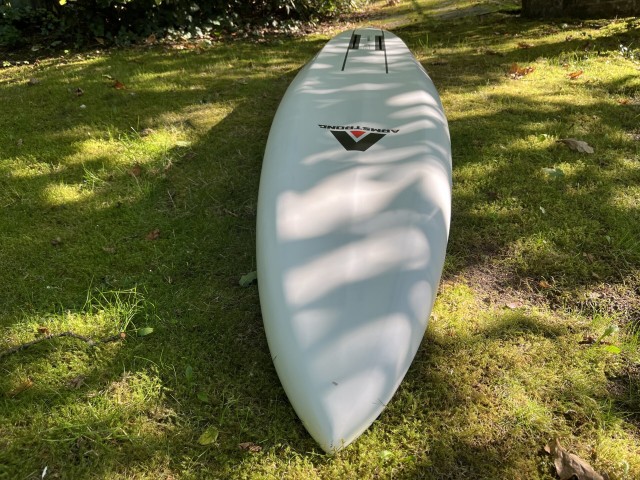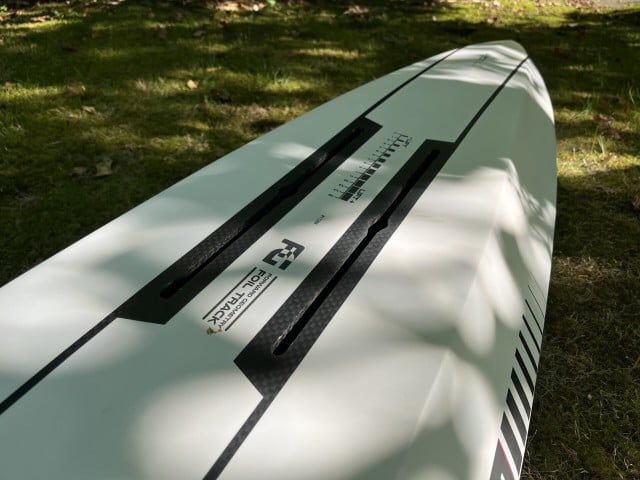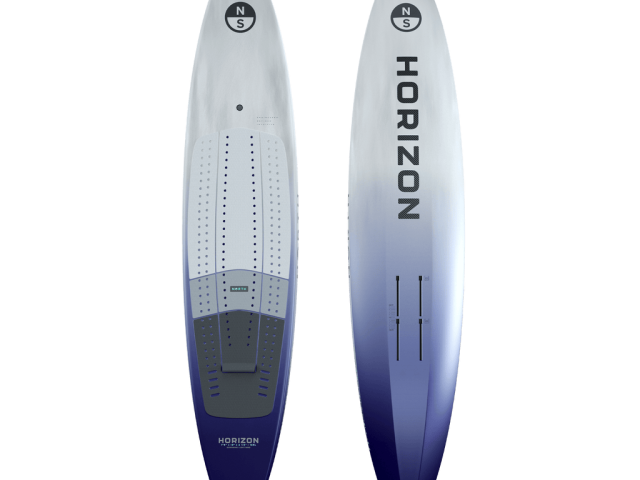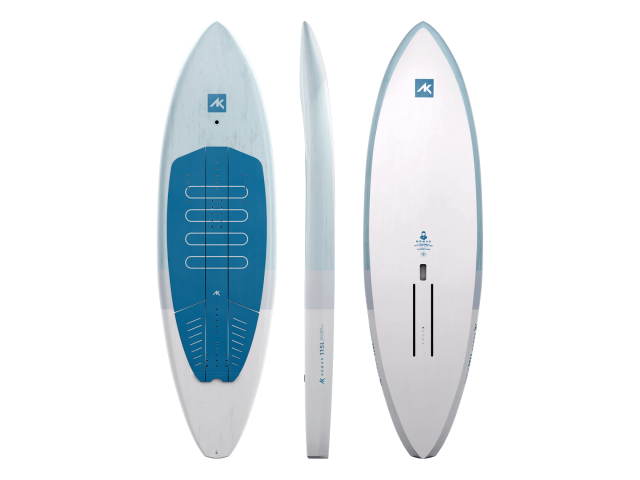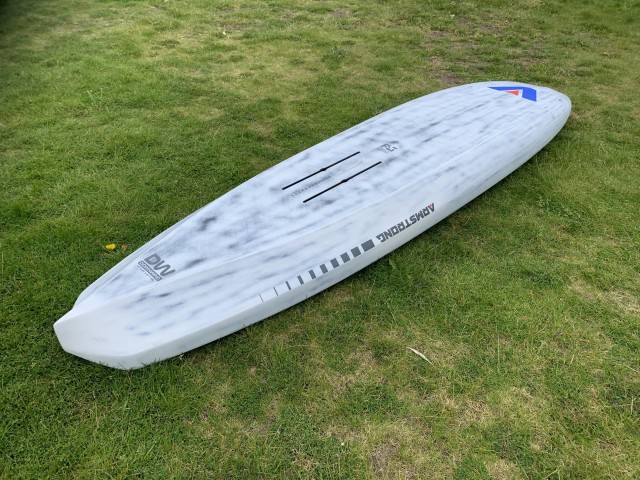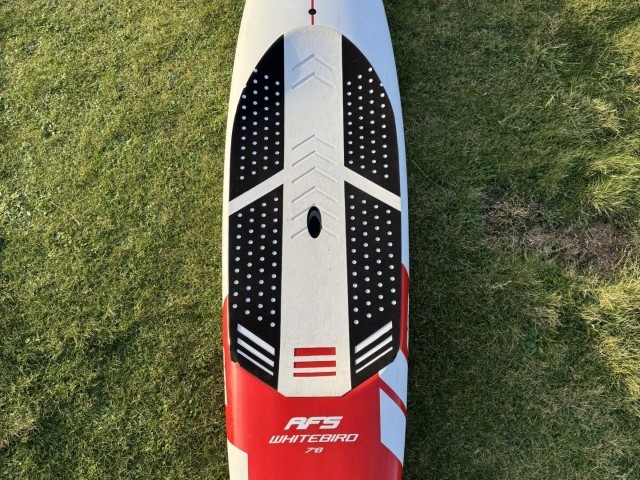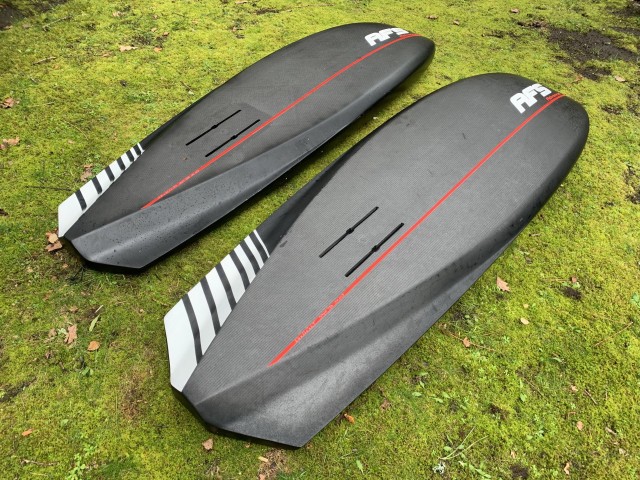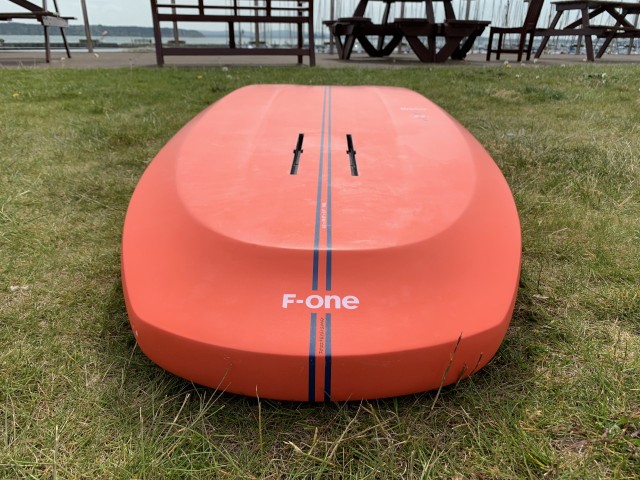At A Glance
Downwind SUP foiling has become my absolute go-to discipline. Anytime it’s windy, I’m searching for bumps. So you can only imagine my excitement when the brand new Armstrong Downwind Performance arrived at my door.
Before I discuss my experience, I’ll highlight some of the upgrades and changes from the original.
They are longer and narrower than the original, designed for expert riders. The board I got on the test is 8ft2 long and 16&3/4 inches wide.
It has a refined bow shape, a split foredeck, a new diamond V tail, and an increased tail rocker. Inspired by the advanced deck grip design from Armstrong’s Wing FG foilboards, the DWP boards feature an entirely redesigned grip. It also has a flatter deck shape, with raised central bars and elevated corner blocks, designed to provide intuitive foot placement when up and foiling.
The DWP comes with a high-quality board bag, as is always the case with Armstrong gear.
Specifications:
- 98L: 8’2" / 249cm x 16 3/4" / 42.6cm x 5 7/8” / 14.9cm - Weight range 5.5-6kg (12.13-13.23lbs)
- 108L: 8’11" / 272cm x 17 1/4” / 43.8cm x 5 7/8” / 14.9cm - Weight range 6.0-6.45kg (13.23-14.22lbs)
- 118L: 9’6" / 289cm x 17 1/4" / 43.8cm x 5 7/8” / 14.9cm - Weight range 6.65-7.1kg (14.66-15.65lbs)
On The Water
As chance would have it, conditions were firing for my first go on the 8’2 at my local Bournemouth run. I have to be honest; it instantly blew me away. We don’t have the best bumps where I live, so on my old board, I’d have to put in 15-20 hard paddle strokes to get on foil quite often. With the 8’2 on this particular day, it was 3-4 paddle strokes, and I was up. That meant I had more energy to foil, pump & connect when I was up.
You might ask…but isn’t it really hard to stand on? My old board was just over 20 inches wide; this one is under 17, so you’d think so. However, I found it only 10% harder to stand on and 100% easier to get up on foil! I believe that is because of the stability the mast gives you; it acts as a kind of keel under your board, adding roll stability. My point is to try not to be nervous about going narrower, and you’ll probably surprise yourself.
So what’s it like up on foil? Because of the forward geometry of the foil box, I didn’t notice the length of the tail. It’s a joy to ride, especially when you consider its length. Armstrong has used lightweight materials, and that pays off when you’re pumping.
At the time of writing, I’ve had no more sessions on the 8’2. I managed to flat water start foils that I never thought I’d be able to, and I’ve made a breakthrough in light wind conditions. The board gave me a lot of confidence to go out in more challenging conditions, which led to some great success. Going out in lighter conditions has meant more time on the water and, therefore, better downwind skills.
I’ve also started using smaller foils on windy days. Recently, the DWP935 has been my go-to. It’s a bit harder to get up on foil than my HA1180, but I stay with the swell much more easily when I'm up. Ultimately, this makes the run easier effort-wise, as I don’t have to peel back as often, again giving me the confidence to send longer runs.
In Summary
As you can probably tell, I’m sold on this board. The efficiency to paddle up is next level, and when you’re up on foil, it’s a joy to ride, and you feel closer to a prone board than a SUP. Armstrong, as always, has delivered a high-quality bit of kit. They recommended this for expert-level riders… I would, however, say that even if you’re not an expert, it’s worth giving this a try; if you can balance on it, the paddle-up speed will allow you to progress far quicker!
Videos
This review was in Issue 21 of Tonic Mag.
For more information visit Armstrong FoilsRelated
By Jack Galloway


